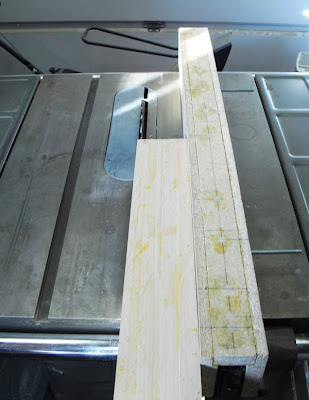
I only had one last piece that needed to be sized before I could move on, a leg. It needed about 1/2" removed and while I could do it with a planer, I didn't need that much Zen today ;) I used the spiffy new rip fence on the table saw. It worked very well, and I feel the time I took to make it was well spent and will certainly make things easier and more accurate in the future!
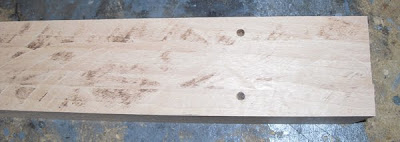
Here's the face I cut. The brownish marks you see are burn marks from the blade. The blade I'm using is old and in need of a good cleaning and sharpening. I really need to get that done.

My attempt at an artistic photo ;)
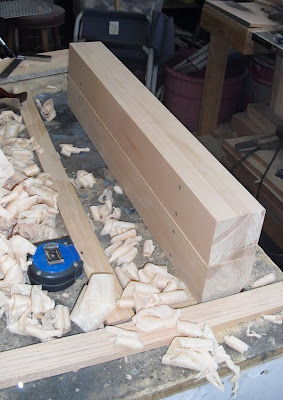
Here's the last leg done, with another one just to be sure they are close. They aren't exactly the same size, but they are close enough that I'm not concerned.

All the base pieces sized and together!
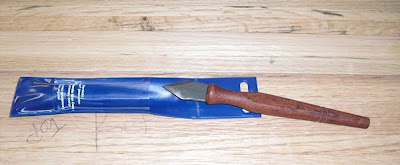
I wanted to get a drill bit to remove as much of the wood from the mortise joints as I could. Since I was going to Woodcraft anyhow, I decided to pick up a marking knife. The biggest advantage a marking knife has over using a pencil or marker, is one edge is flat, so it will mark right up next to the ruler.

I'm making 1" mortise and tenon joints. I intentionally bought a bit that was a little smaller than the mortise size I'm making. This way I can carefully size the mortise hole. I don't really know what advantage a
Forstner bit has over a standard spiral one, but if I need to make a large diameter hole I prefer to use these.
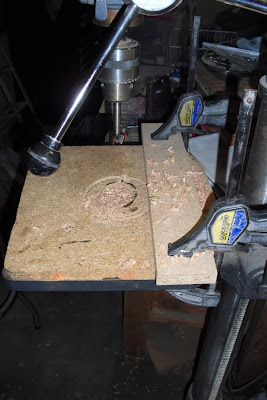
I used a board and some clamps to make a temporary jig on the drill press. This allowed me to be sure I was drilling the same line on the board lengthwise without having to actually draw it out. This came in really handy a bit later.

Here I am drilling the holes for the mortise. Since I am my own photographer, I don't have the tools running when I take pictures, not as exciting to see maybe but a whole lot safer ;) If you'll notice, the leg is butted up against the jig.
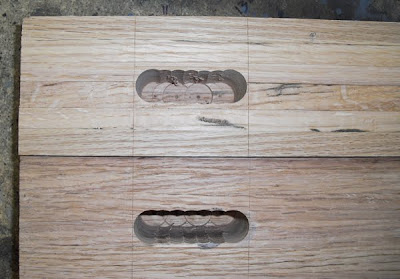
Unfortunately the drill bit was not long enough to drill all the way through the leg, as you can see. This is where that jig came in really handy. I flipped the leg over, scribed the lines of where I wanted the holes to start and end and began drilling.

Aside from a fuzzy picture, the roughed out mortise looks fantastic! One of the advantages of drilling from both sizes is you won't end up with tear out (where the wood grain lifts up instead of cutting, it doesn't look nice :( )
From here I'll use chisels to square the mortise up and get it to the exact size I want. It's common practice to make the mortise side of the joint first and then fit the tenon to it.